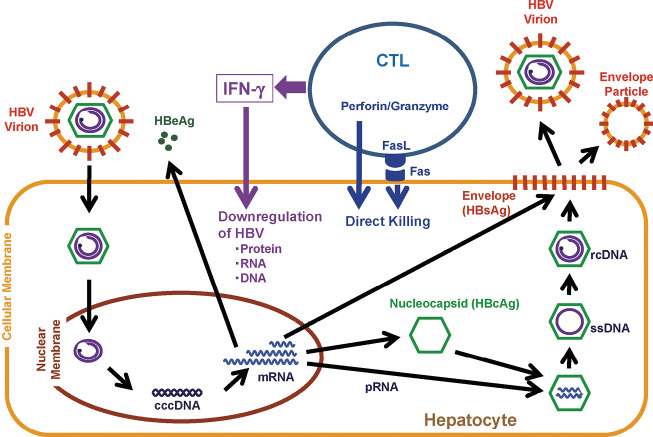Fig. 3.
HBV life cycle and CTL-mediated viral clearance. The process of HBV entry into hepatocyte is poorly understood, however, it is thought to be a receptor-mediated process. Once the virion enters the cytoplasm, it is uncoated; the uncovered nucleocapsid is transported to the nucleus. Following nucleocapsid disassembly, the second strand of the open circular viral genome is completed, and the ends of each strand are ligated. This process results in production of a covalently closed circular DNA (cccDNA), which is the transcriptional template of the virus. Transcription by viral polymerase leads to production of viral RNAs which are transported from the nucleus to the cytoplasm. Transcripts are translated into corresponding proteins, such as envelope proteins, nucleocapsid proteins, HBeAg, polymerase protein, and X protein. The envelope proteins traverse the ER membrane as integral membrane proteins. HBcAg and polymerase proteins assemble around pregenomic RNA (pRNA) to form HBV RNA-containing nucleocapsid, within which RNA is reverse transcribed to produce the first single-strand viral DNA (ssDNA). ssDNA serves as the template for second-strand DNA synthesis, producing nucleocapsid containing a partially double-stranded, relaxed circular DNA molecule (rcDNA). At the ER membrane, it interacts with the envelope proteins that trigger an internal budding reaction. This reaction results in the formation of virion which is transported out of the cell. HBV-specific CTLs recognize and cause death to the HBV-infected cells via Fas lingad- and perforin/granzyme-induced pathways. Activated CTLs produce cytokines, such as IFN-γ, which causes profound, pleiotropic downregulation of the virus noncytopathically in adjacent infected cells.

